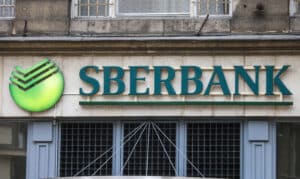Despite a recent 25% decline in its share price potentially due to profit-taking, Locksley continues to expand its leadership team with a new CEO and COO last month, and a former US Air Force Major General appointed to its advisory board this month.
ASX mining share Locksley Resources Ltd (ASX: LKY) closed at 49 cents per share on Friday.
Just one year ago, the critical minerals explorer was trading at 2.4 cents per share.
Had you put just $2,000 into Locksley Resources shares back then, you’d have $40,833 today.
Argh, the agony of opportunities missed.
It’s worth noting though, that this ASX micro-cap stock has tumbled 25% over the past month.
Perhaps this pullback presents an opportunity for investors who felt they’d missed the boat?
Critical minerals are a hot topic these days. They are essential in industries like clean energy, electronics, and defence.
The US is looking for new suppliers to reduce its reliance on China, and also wants to expand its local supplies and production capacity.
This week, Australian Prime Minister Anthony Albanese will meet with US President Donald Trump, and critical minerals are expected to be on the agenda, given Australia’s rich supplies of lithium, rare earths, cobalt, and nickel.
Let’s find out more about why this ASX mining share has been so hot over the past 12 months.
What is Locksley Resources?
Locksley Resources has rare earths and antimony exploration projects in the US, plus a copper and gold mine in NSW.
Locksley’s flagship Mojave Project in California’s Mojave Desert sits in a Tier One location adjoining the Mountain Pass Project.
Mountain Pass has high grade rare earths and is the only producing rare earths mine in the US.
Locksley now has permits for drilling and full funding for two of its explored sites, El Campo (rare earths) and Desert Antimony.
El Campo’s assays reveal Neodymium-Praseodymium (NdPr) of up to 3.19%. NdPr is mixed in an alloy to produce high-performance magnets for wind turbines, electric cars, robotics, and defence systems.
Meanwhile at Desert Antimony, a metallurgical test work program on surface samples produced high-grade concentrate of up to 68.1%, significantly exceeding the minimum marketable requirement of 55%.
Antimony hardens metals and is used in an alloy to make lead-acid batteries and bullets.
Why is this ASX mining share up 2,350% in a year?
Locksley Resources has shared a lot of exciting news over the past 12 months, including excellent assay results and drilling approvals.
The miner reckons its Mojave Project is “emerging as a district-scale critical minerals hub”.
Two capital raises this year have given the miner enough cash to start drilling at El Campo and Desert Antimony.
Locksley Resources has been granted a NATO Commercial and Government Entity (NCAGE) Code, which is a requirement for US and allied government contracts and funding programs.
The miner completed a US OTCQB Venture Market listing and also listed on the Frankfurt Stock Exchange to improve access to US and European investors.
What’s the latest news from Locksley Resources?
Last week, Locksley announced it had qualified to trade on the US OTCQX Best Market, which is an upgrade from the OTCQB market.
Locksley also announced the appointment of former US Air Force Major General (Retired) Peter J. Lambert to its advisory board.
Major General Lambert brings more than 30 years of leadership experience in US intelligence, defence, and advanced technology integration.
The Major General’s appointment follows the company introducing a new CEO, Kerrie Matthews, and COO, Danny George, last month.
The executives say their first priority is fast-tracking a mine-to-market strategy for antimony in the US.
Locksley doesn’t just want to dig antimony out of the ground.
The miner has partnered with Rice University to develop a faster and more eco-friendly processing method for antimony.
Rice University is a global leader in advanced materials and energy research.
The Deep Eutectic Solvent (DES) system that Locksley and Rice University are working on is dubbed ‘Deepsolv’.
Locksley describes Deepsolv as an innovative green hydrometallurgical solvent system for extracting antimony from stibnite ores and concentrates.
If the technology is successfully developed and commercialised, it would potentially position Locksley Resources as an attractive local processing partner for other US antimony miners as well as the US Government.
The miner issued an update about Deepsolv on Thursday.
Why has this ASX mining share fallen 25% in a month?
The ASX mining share’s closing price on Friday represented a 10.9% daily fall.
There was no news from the miner on Friday.
The Locksley Resources share price peaked at an all-time high of 69 cents on 22 September.
That represented a staggering 3,959% ripsnort over the year to date, and a 2,350% rise over 12 months.
Last month on The Bull, Niv Dagan from Peak Asset Management said he had a hold rating on Locksley Resources shares.
Dagan explained that he expected some profit-taking to occur after the ASX mining share’s rapid price ascension.
Looks like he might have been right.



